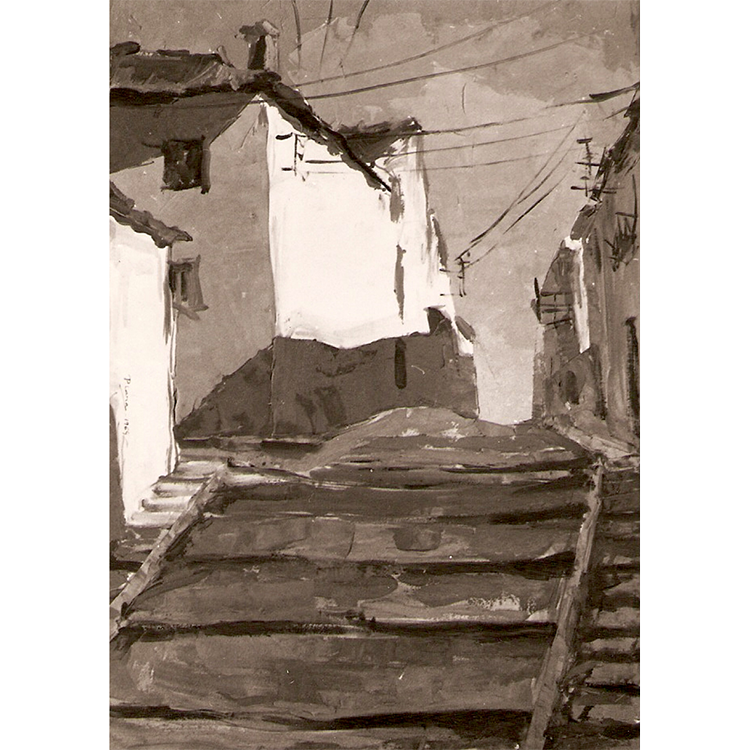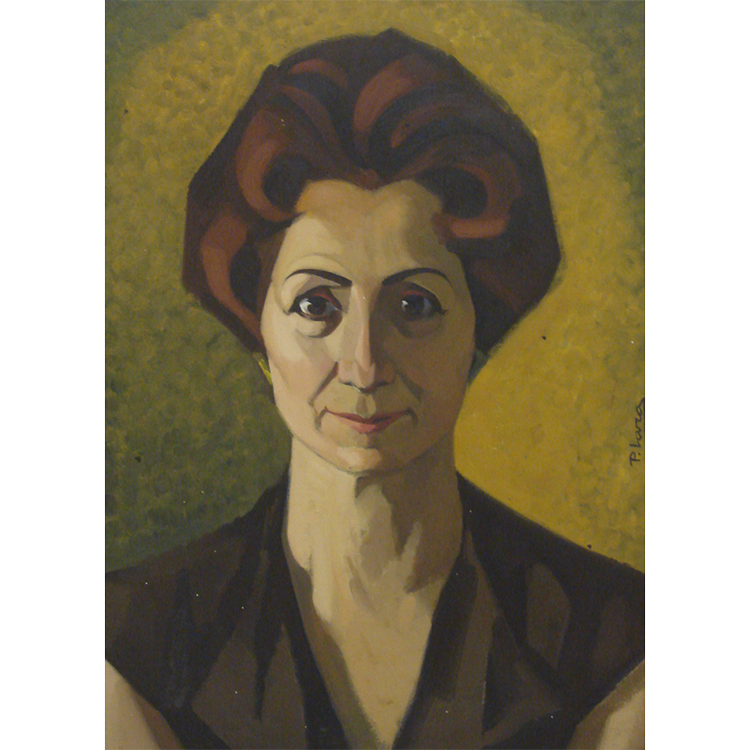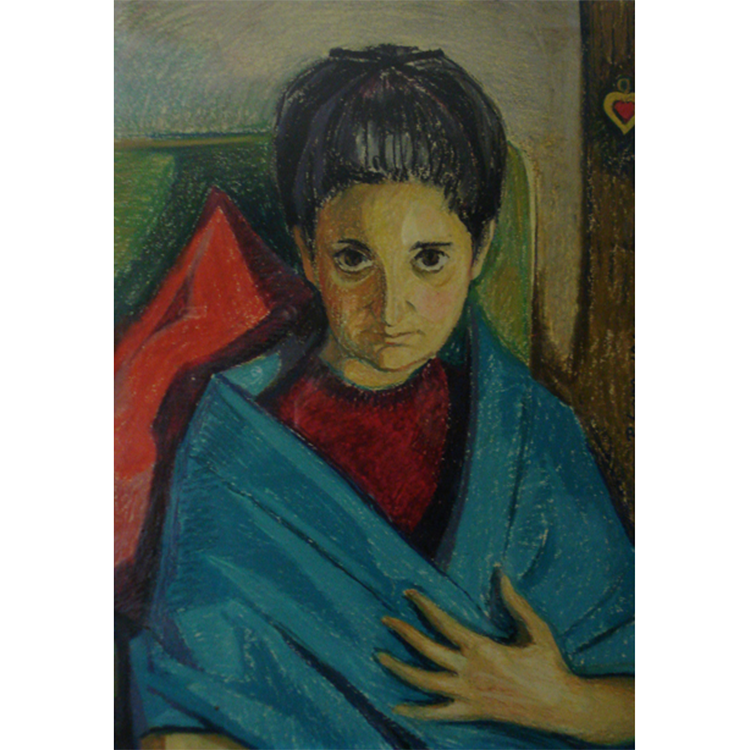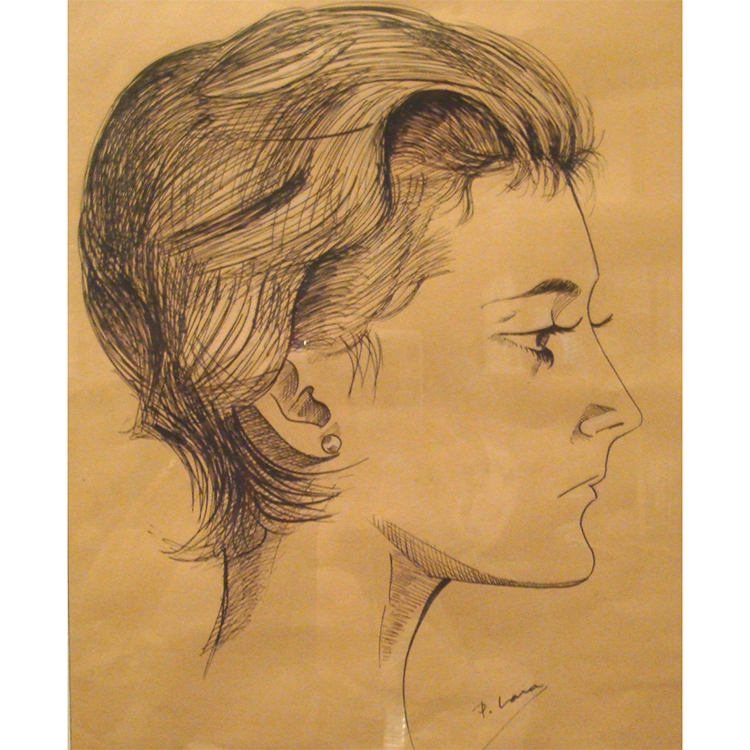First Works (1963-1965)
Pilar Lara paints her first works between the summer of 1963, before starting the last year of her degree at the Fine Arts School, and her move to Paris after marrying in September 1965. However, most of them are produced during the summer of 1964, after finishing her studies, in order to prepare her first exhibition in September that year, in Úbeda. These works were meant to put into practice what she had learnt at the School, ‘loosen her hand’ and test her ability to organize series on a particular theme and with a consistent style. It is easel painting, switching between her work at the privacy of home and plein air painting, always ‘from nature’, about two of the pillars of the classic training: portrait and landscape. Most of them were painted in oil, on canvas or paper, except for a few more intimate portraits done with pastels, ink or pencil on paper, all produced in 1965.
This is a experimental phase, as evidenced by the fact that, for portraits, she always chooses models from her family environment, and for landscapes, the streets and surroundings of Úbeda, a friendly and familiar territory due to the summers she spent in the homeland of her father’s family. The technique uses a impressionist style, based on thick brushstrokes, and the original texture of walls, fields, floorings, faces, and fabrics is often captured in the surface of the painting. However, within the same style, the influence of two different models in portraits and landscapes can be appreciated.
The portraits tend towards chiaroscuro, the contrast of light, a certain gravity inherited from the baroque naturalism, especially the three large canvases representing her mother, grandmother and husband, and her first self-portrait- although the portrait of her aunt Catalina is also an approach to post-impressionism-. The last portraits will evolve, however, into an increased contrast of colour, thanks to the use of pastels, as in the case of her sister Charo’s and in her second self-portrait.
As for the landscapes, they seem to owe a debt to a certain ‘Castilian’ impressionism, bright but sober, that deals with the volume accomplished by planes of light and shadow, lacking detail and tenderness, and in contrast, with no ‘human landscape’. Some works are quieter and others busier, but generally speaking, this series is much more of a unitary nature, a reflection of a fast and consistent method of work carried out in a few weeks in Úbeda. Only in the composition with trees (mostly olive trees) certain nods to the way she reflects the vibrations of post-impressionist colours can be found.
She made known all these landscapes (sixteen) along with four of the portraits, in the exhibition held in Úbeda. Only eight of the landscapes and three of the portraits are documented, and their whereabouts are even unknown. Some works were very likely purchased in Úbeda. The exhibition only had an impact at a local level. Pilar probably wanted nothing else at the time, and hoped to work on her technique and abilities in the coming years.
Juan Pasquau, the town chronicler, wrote back then: ‘What a very difficult conjunction of spontaneity and confidence in her canvases! The light of our town can be easily recognized in Pilar Lara’s paintings’.









































